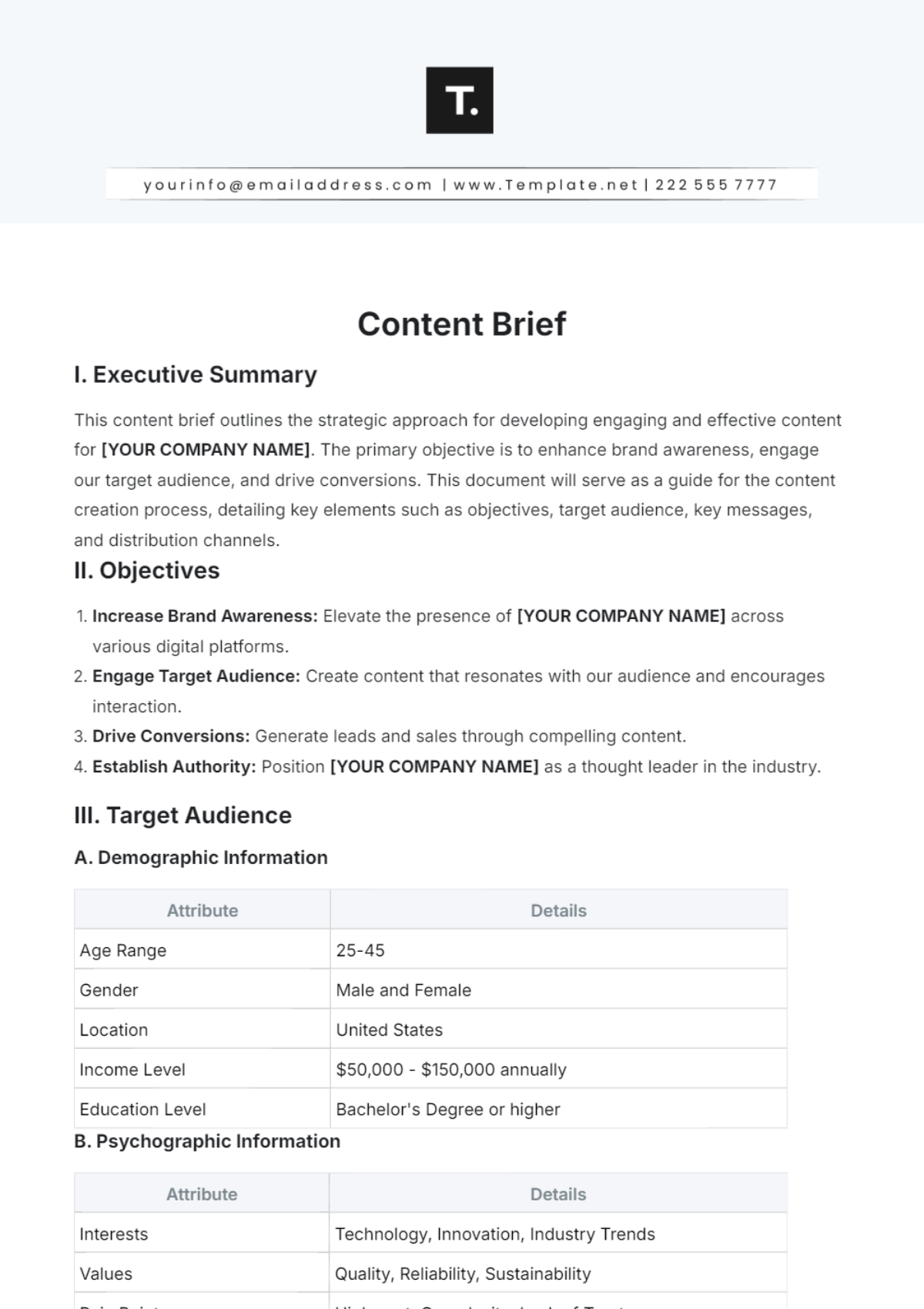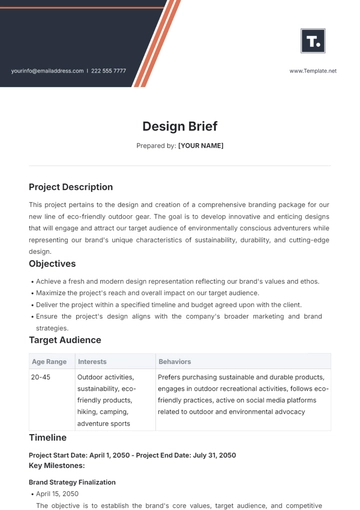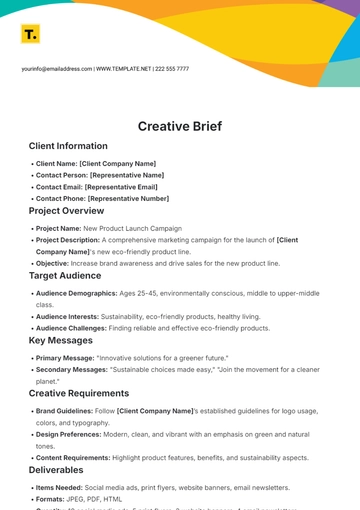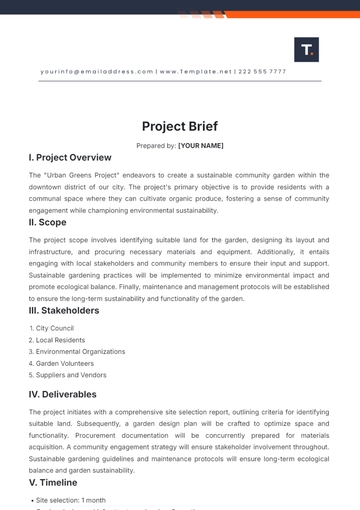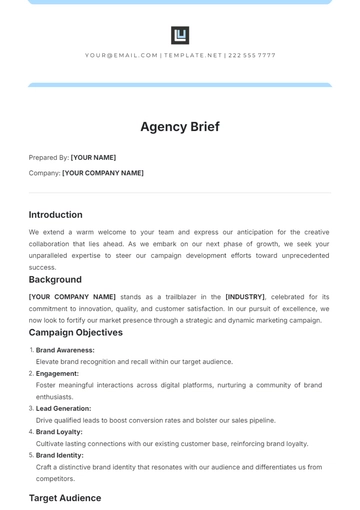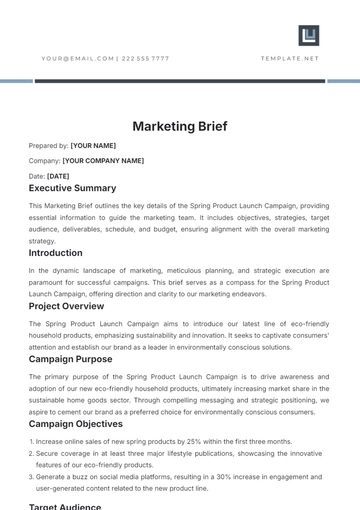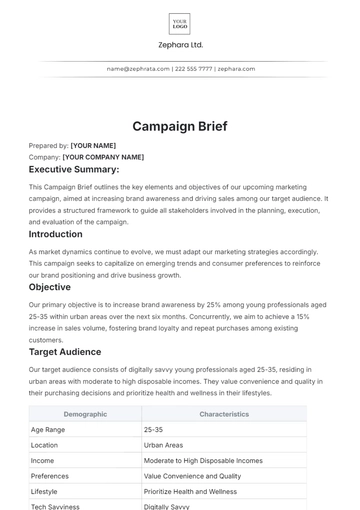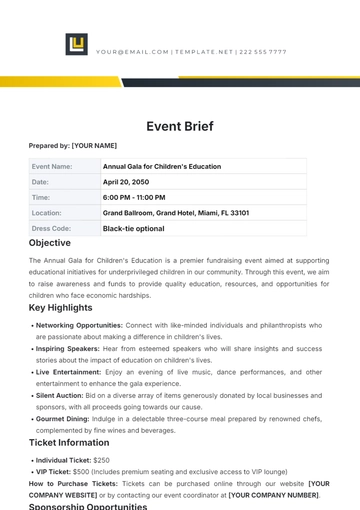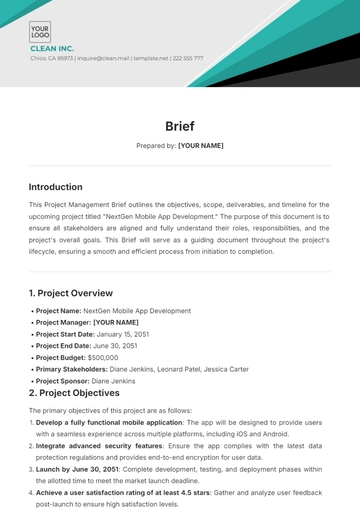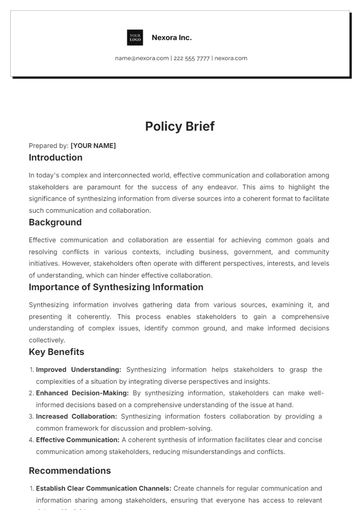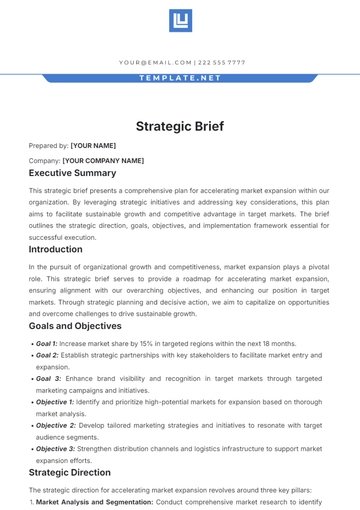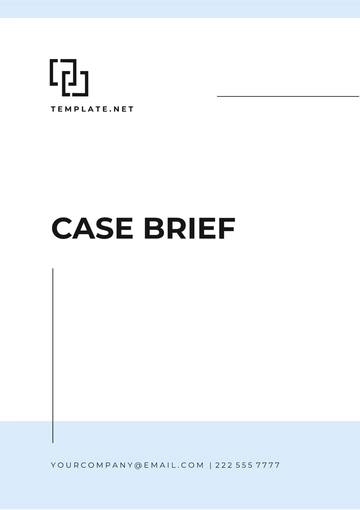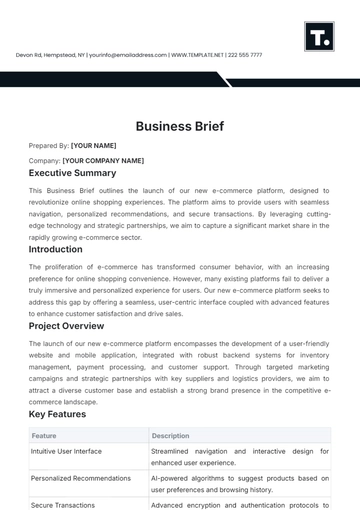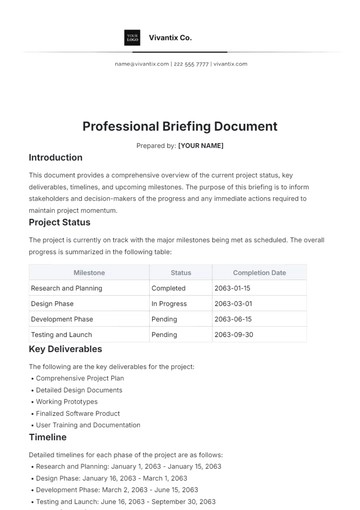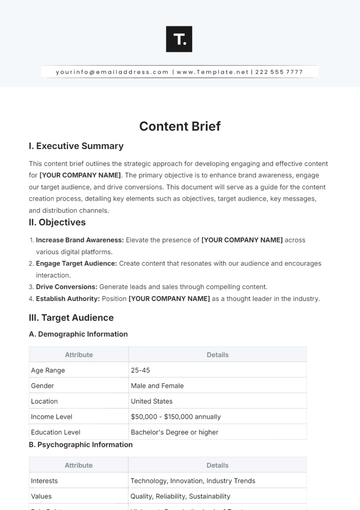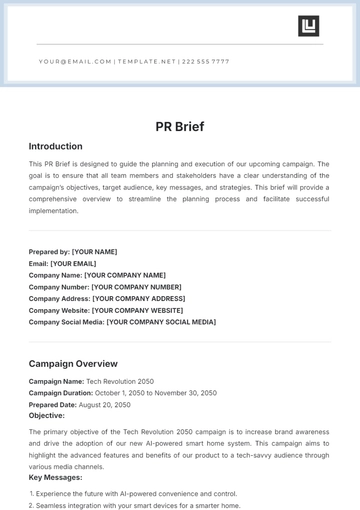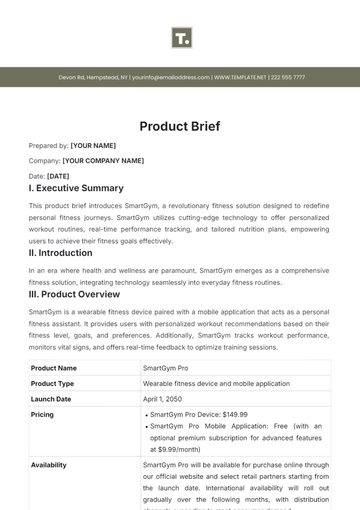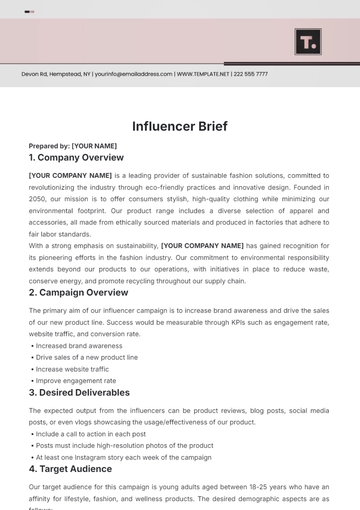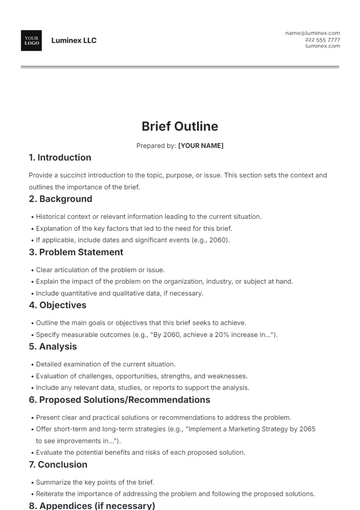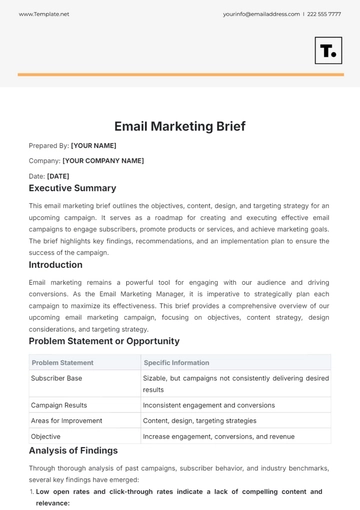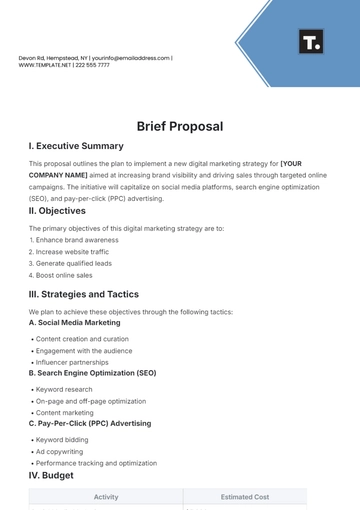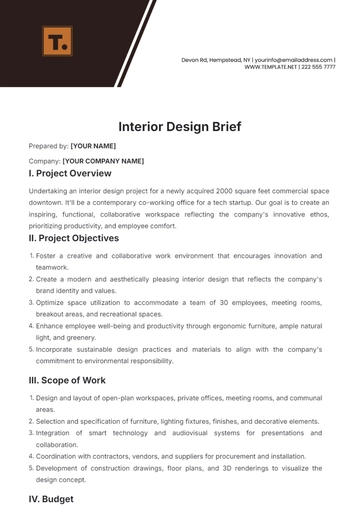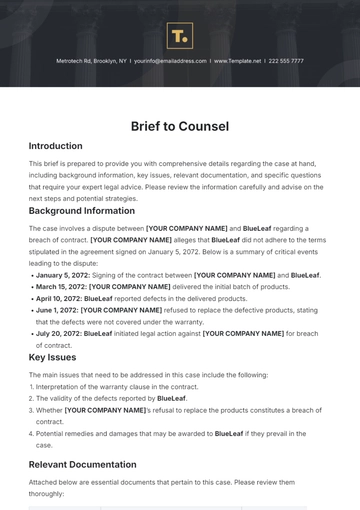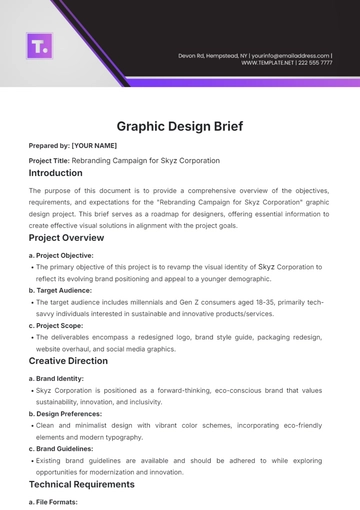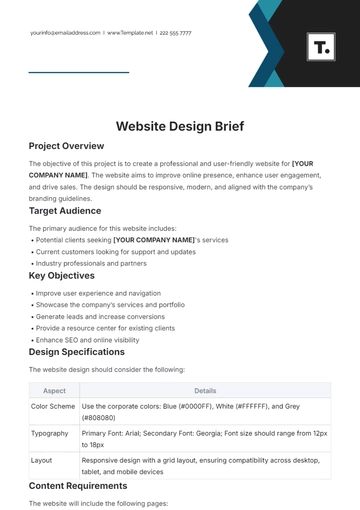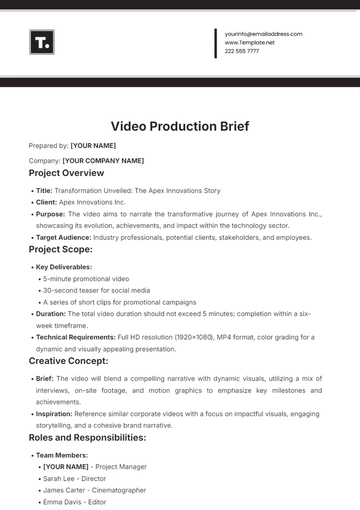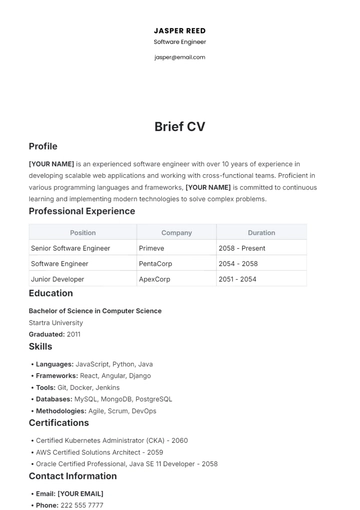Content Brief
I. Executive Summary
This content brief outlines the strategic approach for developing engaging and effective content for [YOUR COMPANY NAME]. The primary objective is to enhance brand awareness, engage our target audience, and drive conversions. This document will serve as a guide for the content creation process, detailing key elements such as objectives, target audience, key messages, and distribution channels.
II. Objectives
Increase Brand Awareness: Elevate the presence of [YOUR COMPANY NAME] across various digital platforms.
Engage Target Audience: Create content that resonates with our audience and encourages interaction.
Drive Conversions: Generate leads and sales through compelling content.
Establish Authority: Position [YOUR COMPANY NAME] as a thought leader in the industry.
III. Target Audience
A. Demographic Information
Attribute | Details |
|---|
Age Range | 25-45 |
Gender | Male and Female |
Location | United States |
Income Level | $50,000 - $150,000 annually |
Education Level | Bachelor's Degree or higher |
B. Psychographic Information
Attribute | Details |
|---|
Interests | Technology, Innovation, Industry Trends |
Values | Quality, Reliability, Sustainability |
Pain Points | High cost, Complexity, Lack of Trust |
Preferred Content | In-depth articles, Case studies, How-to guides |
IV. Key Messages
Innovation: Highlight [YOUR COMPANY NAME]'s innovative solutions.
Quality: Emphasize the high quality and reliability of our products/services.
Customer-Centric: Showcase our commitment to meeting customer needs and solving their problems.
Industry Expertise: Demonstrate our expertise and thought leadership in the industry.
V. Content Types and Formats
Content Type | Format | Purpose | Frequency |
|---|
Blog Posts | Articles (800-1200 words) | Inform, Educate, Engage | Weekly |
Social Media Posts | Images, Videos, Infographics | Engage, Drive Traffic | Daily |
Case Studies | PDF, Webpage | Showcase Success Stories | Monthly |
White Papers | PDF, Webpage | Establish Authority, Generate Leads | Quarterly |
Email Newsletters | HTML Email | Nurture Leads, Drive Conversions | Bi-Weekly |
VI. Content Distribution Channels
VII. Content Calendar
A. Monthly Content Plan
Week | Blog Post Topic | Social Media Theme | Email Campaign | Additional Content |
|---|
Week 1 | Industry Trends | Innovation Highlight | Newsletter Issue 1 | Case Study |
Week 2 | How-to Guide | Customer Success Story | Product Feature Email | White Paper |
Week 3 | Product Comparison | Behind the Scenes | Newsletter Issue 2 | Infographic |
Week 4 | Expert Interview | FAQ Series | Special Offer Email | Video Tutorial |
VIII. Measurement Metrics
Metric | Description | Target Value |
|---|
Website Traffic | Number of visitors to the website | 50,000/month |
Engagement Rate | Likes, shares, and comments on social media | 10% increase |
Lead Conversion | Number of leads generated from content | 1,000/month |
Email Open Rate | Percentage of opened emails | 25% |
Bounce Rate | Percentage of visitors who leave immediately | <40% |
Brief Templates @ Template.net
